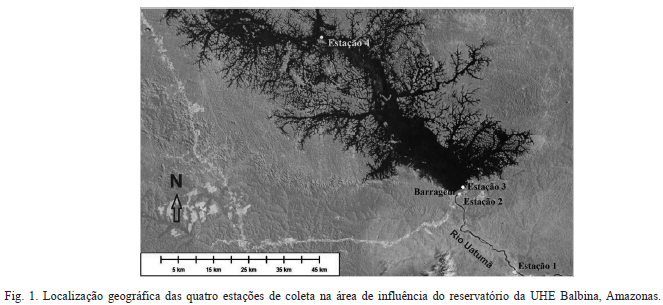The diet of five species of Hemiodontidae (Hemiodus argenteus (Pellegrin, 1908), H. atranalis (Fowler, 1940), H. immaculatus (Kner, 1858), H. microlepis (Kner, 1858) e H. unimaculatus (Bloch, 1794)) from the area of influence of the Balbina Reservoir, Uatumã River, northern Brazil, was investigated. Fish were collected bimonthly from April 2005 to February 2007 in four places, two in the reservoir (upstream the dam) and two in the river (downstream the dam). A total of 318 stomachs were analyzed. The diet was evaluated using two methods: frequency of occurrence and relative volume, both combined in the Alimentary Index (IAi). The breadth of the alimentary niche was low among the five analyzed species. Hemiodus unimaculatus presented the largest niche breadth, while H. argenteus showed the smallest. Detritus was an important item in the diet of all species, being predominant in Hemiodus argenteus, H. microlepis and H. unimaculatus. Hemiodus atranalis ingested mainly microcrustaceans and H. immaculatus consumed a larger proportion of vegetables. Despite the consumption of certain preferential items the ingestion of a wide variety of items occurs for all the species showing a broad trophic diversity in the diet of this family, which could explain its relative success in reservoirs in the Amazon.
Hemiodus; Environmental impact; Food habit; Amazon fish




